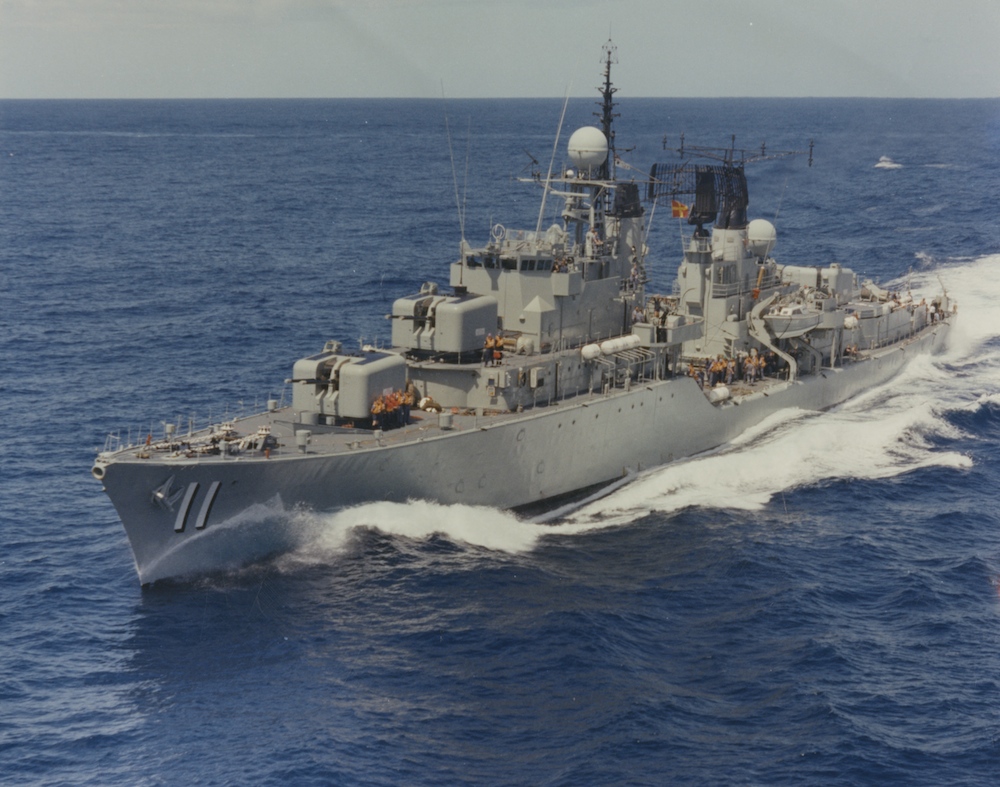
This gun was intended to correct the many deficiencies of British destroyer weapons of World War II and was extensively used on ships built after the war. Unlike previous types, this weapon was designed from the outset for high elevations, automatic aiming (RPC) and a fast rate of fire. The weapon had many novel features, notably a loading tray, with which the gun recoils, and a rammer, which is pushed clear of the gun's axis by the vertically closing breech block. Ammunition was supplied by two magazines, each with a separate shell hoist, one for AA and one for HE/SAP. A third hoist supplied the cartridges.
The ramming mechanism proved to be overly complex and prone to faults. For this reason, the high rate of fire initially expected could not be realized in practice and most gun crews relied upon hand-loading in order to maintain a steady rate of fire. Despite this problem, these guns proved to be reliable in service and gave a good account of themselves during the Falklands War.
Service introduction was on the Australian "Modified Battle" class destroyers HMAS Anzac and HMAS Tobruk. In Britain, these weapons were first used on the Daring class destroyers, about which was said: "At last the RN had a modern destroyer with a longitudinally framed, welded hull, efficient and compact machinery, AC electrics and an effective dual-purpose armament. These 'innovations' were introduced a decade later than in the USN" - D.K. Brown RCNC.
Nomenclature Note: In the 1950s the British weapon designation system changed from being per the gun itself to being per the mounting the gun was used in. At the same time, arabic numerals replaced roman numerals. Some confusion was created under this new system because older weapons were redesignated, even though the weapons and mountings themselves did not change. Under this new system, the combination of the 4.5-in Mark V gun as used in the Mark VI twin mounting was redesignated as the 4.5-in Mark 6 gun mounting. As could be expected, these changes have led to much confusion as to what weapons were actually used on any particular ship. For this reason, at the top of this datapage I show both the original per-the-gun designation and, in parenthesis, the per-the-mounting redesignations.
The Mark 7 was the never-built mounting intended for the Malta class carriers which would have used the same Mark V gun barrel as did the Mark 6 mounting. It has been speculated that the Mark 7 mounting might also have been used on the Lion class battleships.
This weapon had a loose barrel construction. The barrel was withdrawn to the rear and was held in place by retaining and locking plates attached to the breech ring. The breech block moved vertically, opened hydraulically and closed by spring operated racks. The breech ring was screwed and shrunk onto the jacket. About 300 guns were manufactured.
All British 4.5" naval guns have an actual bore diameter of 4.45" (11.3 cm). In regards to this bore diameter:
A Note on Sources: "The Naval Institute Guide to World Naval Weapon Systems: Fifth Edition" by Norman Friedman on page 481 in the entry for the Mark 6 (Mark 5 gun) states: "Although the nominal caliber was 4.5 in, in fact the caliber was 4.7 in (120mm), the earlier standard for British destroyers. The nominal caliber was changed to prevent the use of earlier (in-compatible) ammunition in the new 4.5-in semi-dual purpose guns. Only the modern Mk 8 gun is really 4.5 in (114mm)." This statement is incorrect. As noted above, all British 4.5" (11.4 cm) guns have an actual bore diameter of 4.45" (11.3 cm) as is stated in every other resource that I have found. In addition, measurements of casings used for the Mark 6 mounting shows that they are the same size as those for earlier separate ammunition guns with the exception that the neck has a different pattern for holding the closure cup.
| Designation | 4.5"/45 (11.4 cm) QF Mark V |
|---|---|
| Ship Class Used On | Britain
Prototype installed on HMS Saintes Lion (1945), Malta, Daring, County, Leander, Leopard (Type 41), Whitby (Type 12) and Salisbury (Type 61AD) classes Australia
Chile
Netherlands
|
| Date Of Design | 1944 |
| Date In Service | 1947 |
| Gun Weight | 6,304 lbs. (2,859 kg) including breech mechanism |
| Gun Length oa | 241.25 in (6.128 m) |
| Barrel Length | 202.0 in (5.131 m) |
| Rifling Length | 170.9 in (4.341 m) |
| Grooves | (32) 0.037 in deep x 0.291 (0.94 x 7.39 mm) |
| Lands | 0.1459 in (3.706 mm) |
| Twist | Uniform RH 1 in 25 |
| Chamber Volume | 600 in3 (9.83 dm3) |
| Rate Of Fire | Designed: 24 rounds per minute (power)
Service: 12 - 14 rounds per minute (hand) Burst mode: 18 rounds per minute (hand) |
| Type | Separate |
|---|---|
| Projectile Types and Weights 1 | HE - 55 lbs. (25 kg)
SAP - 55 lbs. (25 kg) AA - 55 lbs. (25 kg) |
| Bursting Charge | N/A |
| Projectile Length | N/A |
| Propellant Charge | 11.04 lbs. (5.0 kg) SC 122
13.63 lbs. (6.18 kg) NF/S 198-054 |
| Cartridge Case Type, Size and Empty Weight | Brass, 114 x 645 mm, about 27.0 lbs. (12.2 kg) 2 3 |
| Muzzle Velocity | New gun: 2,449 fps (746 mps)
Average gun: 2,350 fps (716 mps) |
| Working Pressure | 20.5 tons/in2 (3,230 kg/cm2) |
| Approximate Barrel Life | 650 rounds |
| Ammunition stowage per gun | N/A |
| Elevation | Range |
|---|---|
| 45 degrees | 20,750 yards (18,970 m) |
| AA Ceiling @ 80 degrees | 41,000 feet (12,500 m) |
| Designation | Twin Mountings
Britain
Australia
Chile
Netherlands
|
|---|---|
| Weight | Mark VI: 98,560 lbs. (44,706 kg)
Mark VII: N/A |
| Elevation | -15 / +80 degrees |
| Elevation Rate | 25 degrees per second |
| Train | about +150 / -150 degrees |
| Train Rate | 25 degrees per second |
| Gun recoil | N/A |
- ^The design of the last version of the Lion class battleships was never finalized and the make up of their secondary armament is somewhat of a speculative nature.
- Welding was extensively used for the first time in British gun-mount construction. The mountings were unusual in that the training mass was entirely supported by a cantilevered structure that provided a circular gunbay clear of obstructions which thus allowed for easier transfer of ammunition to the revolving structure. This design did, however, greatly increase the structural weight needed to support the mounting.
- These mountings used hydraulic rams for elevation.
- The RP 41 Mark VI was a true turret with three upper and three lower hoists per gun, one for AA rounds, one for other projectiles and one for cartridges.
- The gun axes were about 38 in (96.5 cm) apart.

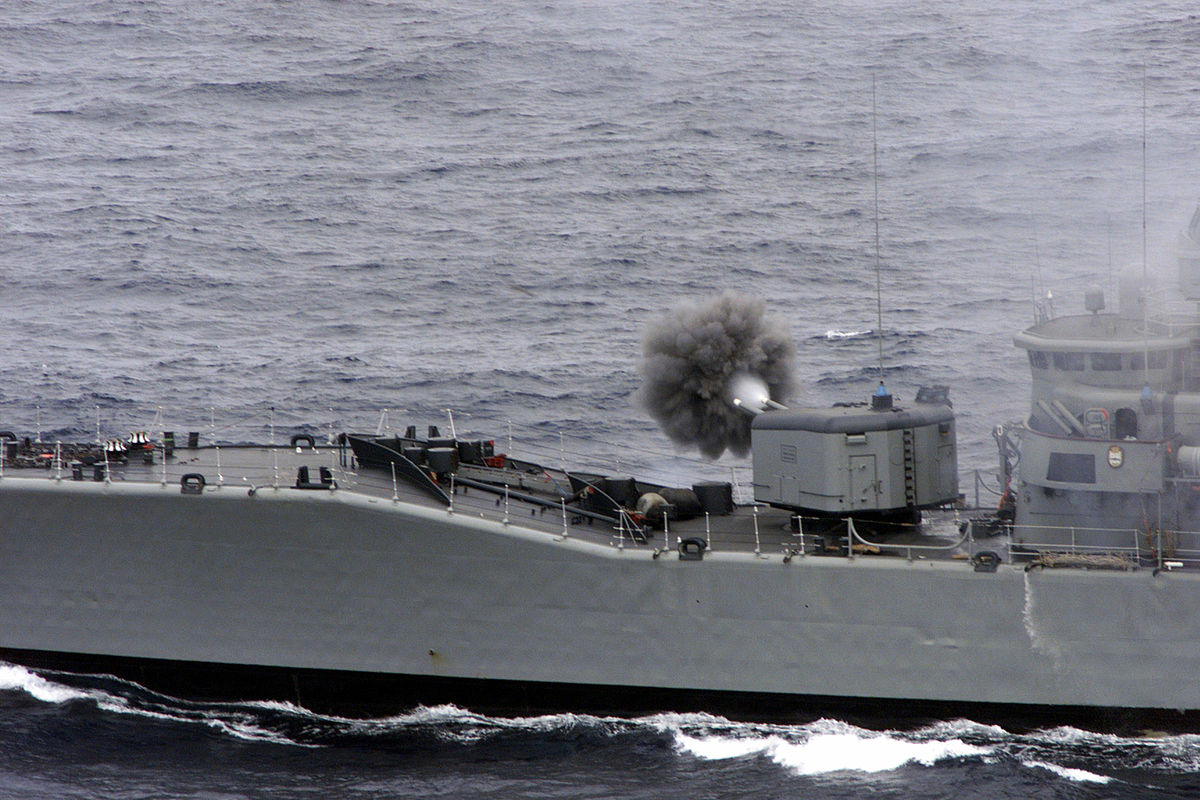
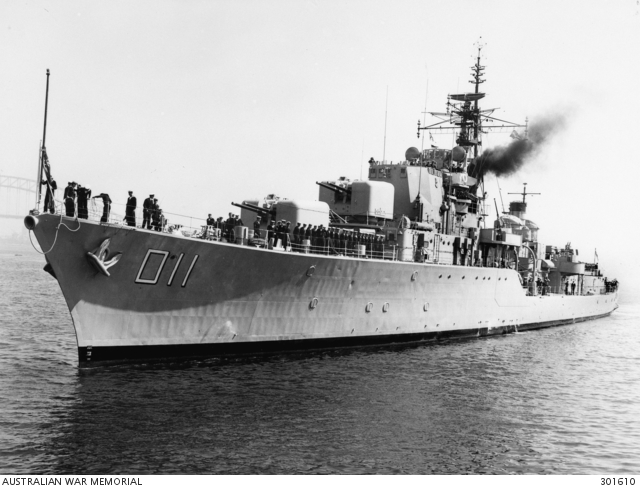
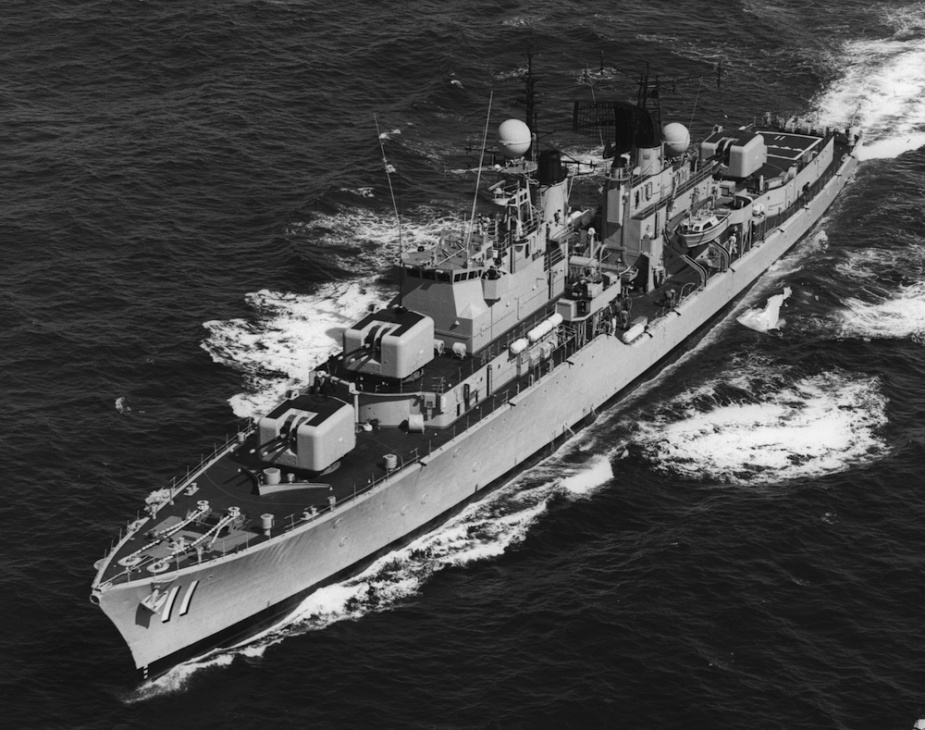
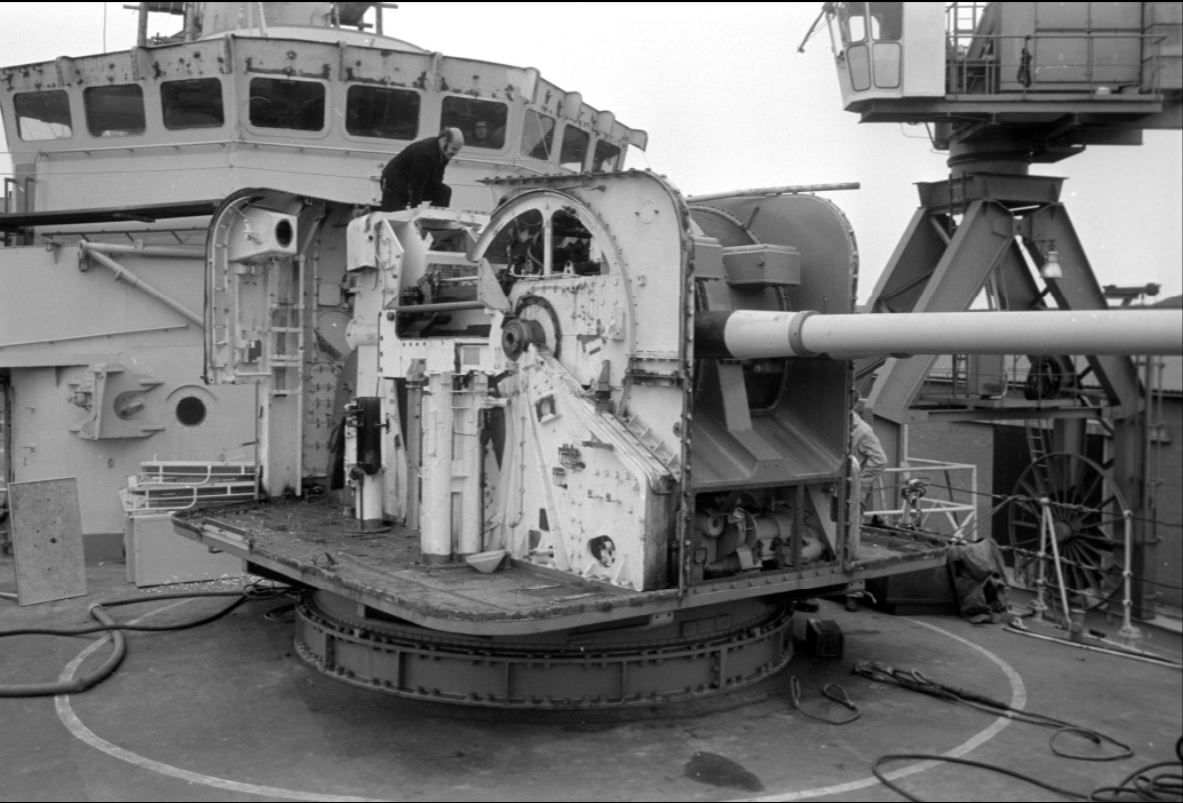
Images at The Vickers Photographic Archive
See 0751
"Nelson to Vanguard: Warship Design and Development 1923-1945" by D.K. Brown
"Warship Pictorial: The Building of HMS Duke of York" article by Ian Buxton in "Warship Volume VIII"
"Naval Weapons of World War Two" and "British Naval Guns 1880-1945 No 16" article in "Warship Volume IX" both by John Campbell
"The Naval Institute Guide to World Naval Weapon Systems 1991/92" and "The Naval Institute Guide to World Naval Weapon
Systems: Fifth Edition" both by Norman Friedman
"Jane's Ammunition Handbook: Ninth Edition 2000-2001" edited by Terry J. Gander and Charles Q. Cutshaw
"Vanguard to Trident: British Naval Policy since World War Two" by Eric Grove
"Warships of World War II" by H.T. Lenton and J.J. Colledge
"British Battleships of World War Two" by Alan Raven and John Roberts
"Rapid Fire" by Anthony G. Williams
---
Collection of Netherlands Institute for Military History (NIMH) Photographs (Dutch Language)
---
Special help from Anthony G. Williams and Jorge Chubretovich, Radm (retired), Chilean Navy
03 November 2008 - Benchmark
07 August 2010 - Corrected number of mountings on Type 41 Frigates
12 February 2012 - Updated to latest template
27 October 2012 - Added details on Australian ships
01 December 2015 - Changed Vickers Photographic Archive links to point at Wayback Archive
24 March 2017 - Converted to HTML 5 format
14 August 2019 - Added note on sources regarding bore diameter, added case information, reorganized notes, minor formatting changes
26 March 2020 - Corrected caption for photograph of Chilean Frigate Almirante Condell
03 November 2021 - Minor changes in ammunition section
22 May 2023 - Added photograph of Van Galen
19 April 2025 - Corrected photograph caption for Van Galen
